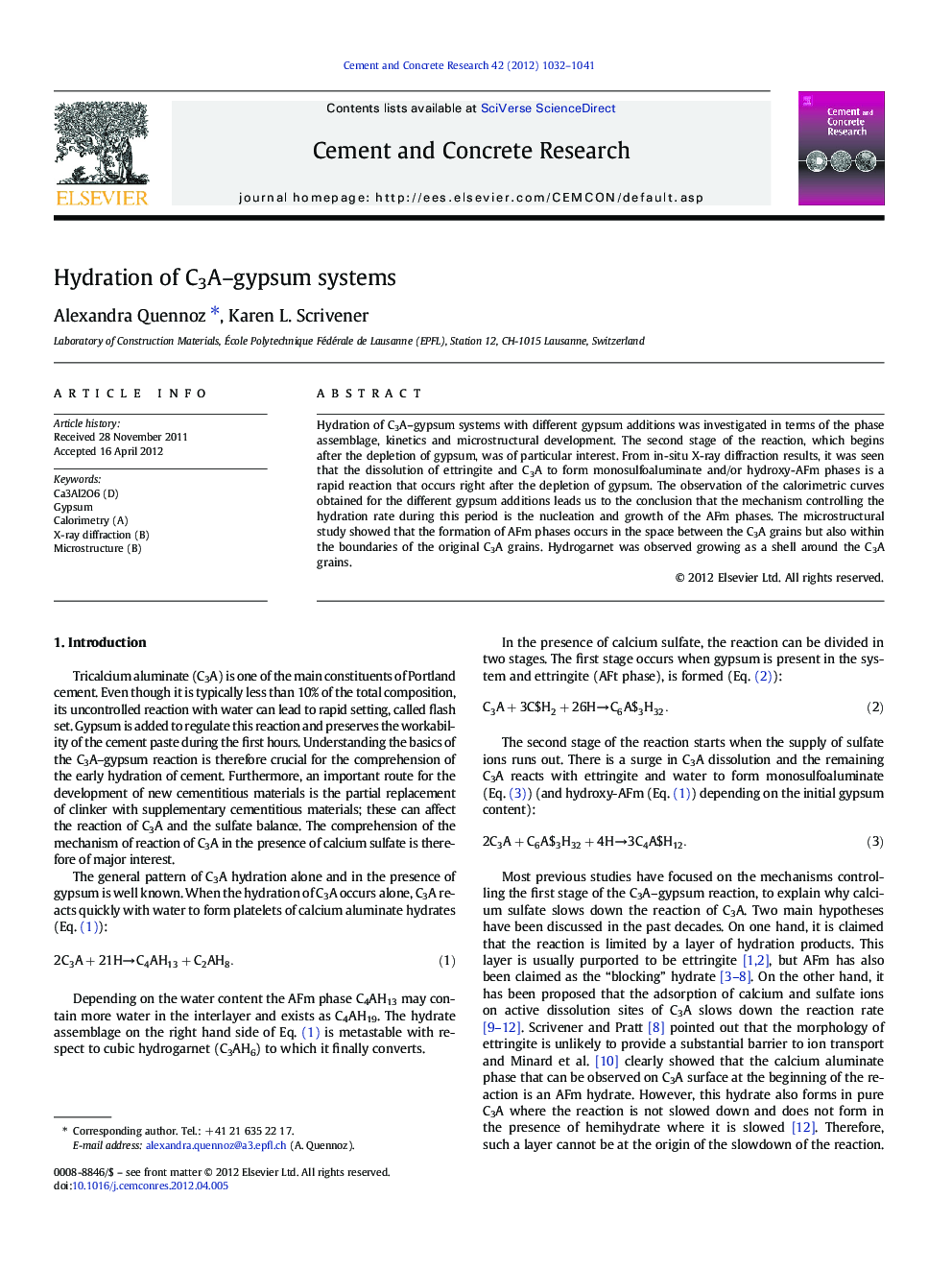| Article ID | Journal | Published Year | Pages | File Type |
|---|---|---|---|---|
| 1456687 | Cement and Concrete Research | 2012 | 10 Pages |
Hydration of C3A–gypsum systems with different gypsum additions was investigated in terms of the phase assemblage, kinetics and microstructural development. The second stage of the reaction, which begins after the depletion of gypsum, was of particular interest. From in-situ X-ray diffraction results, it was seen that the dissolution of ettringite and C3A to form monosulfoaluminate and/or hydroxy-AFm phases is a rapid reaction that occurs right after the depletion of gypsum. The observation of the calorimetric curves obtained for the different gypsum additions leads us to the conclusion that the mechanism controlling the hydration rate during this period is the nucleation and growth of the AFm phases. The microstructural study showed that the formation of AFm phases occurs in the space between the C3A grains but also within the boundaries of the original C3A grains. Hydrogarnet was observed growing as a shell around the C3A grains.
